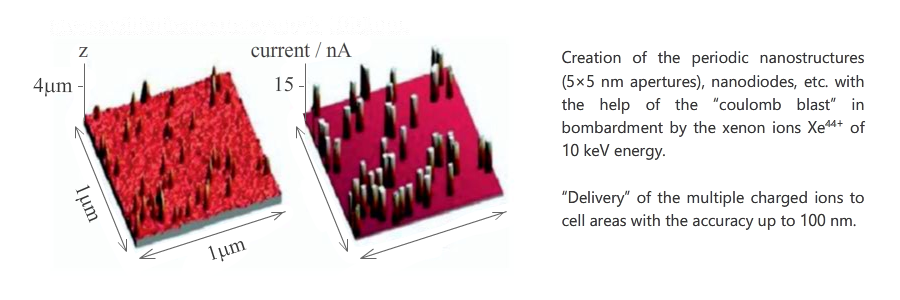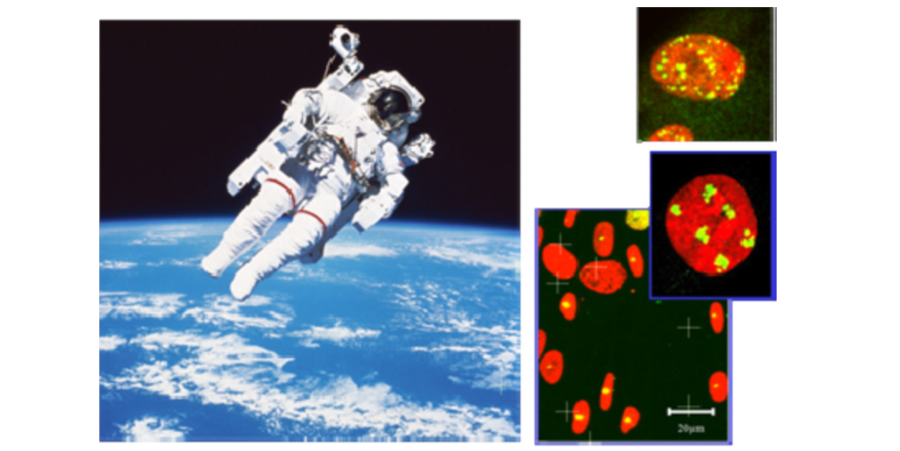Innovation
The building accelerator complex will have the ion beams in a wide energy range from a few keV to 4500 MeV. This gives to it an unique interdisciplinary and innovative potential. Namely, on the NICA complex beams it is planned to establish three research zones: the low, medium and high energy zones allowing experimentalists to carry out research on material science, nano- and picotechnology, medicine, biology, electronics, ROSCOSMOS programs, nuclear energy and safety, cryogenic and superconducting technology.
The Russian President determined five areas of the innovation development of the Russian Federation:
- energy efficiency and energy saving;
- nuclear technologies;
- space technologies;
- medical technologies;
- strategic information technologies.
The NICA complex infrastructure will allow the usage of available beams for innovative and technological activities in all indicated areas in the Russian Federation and other JINR member-states.
Power-saving Systems and Technologies
Power-saving systems and technologies are penetrating into all spheres of life, to say nothing of the scientific facilities. The future of the modern accelerators is the superconducting (SC) magnets.
The Nuclotron type SC-magnets are the pride of the JINR. They are unique in their characteristics and are of interest not only for the NICA complex.
So, the SIS-100 accelerator, created for the FAIR project in Darmstadt, is based on the magnets of this type. Their use is also actual for construction of compact industrial accelerators for nuclear energetics, and in the health care facilities for radiotherapy (including the carbon ion radiotherapy) using synchrotrons for producing beams with the energies of 100–600 MeV.
The JINR has developed the technique of complex diagnostics of cryogenic systems which can be used in any center with similar facilities.
An unique method of diagnostics of a two-phase four-component flow “oil-salt-gas-water” is created in the Laboratory of High Energies (LHEP, JINR, Dubna), which allows to determine the quantitative content of the indicated impurities in oil.

The ion beams are actively used in medical engineering and for biological research
Another promising innovative direction is connected with the development of “alternative energetics”. Research in this area is carried out in the framework of the project “Energy and transmutation”. A pilot setup was constructed in LHEP which uses the Nuclotron beam. It allows researchers to obtain the data necessary for creation of the working models, design of the active zone of an industrial reactor, management and disposal of the spent nuclear fuel.

Testing of electronics. The Resurs-DK1 Russian satellite was launched by a Soyuz rocket from Baikonur Cosmodrome on 15 June 2006. On the upward-facing side of the satellite the research apparatus PAMELA was mounted. PAMELA was equipped

The program of the exploration of deep space. On the right-hand side there are the tracks of the heavy ions (the iron) on the test cells, the DNA double strand breaks are visualized.
For the high-tech industry NICA is the actual request for the development of:
- new generation of metrology with the measurement accuracy of 1 micron, including conditions at the cryogenic temperatures down to 4 K;
- manufacturing technologies and usage of high-temperature superconducting materials;
- the culture and production of the equipment using the ultra-high vacuum technologies base: 10–11 Torr (10–9 Pa);
- superimposing of thin film coatings (graphene, niobium, arsenides and nitrides);
- domestic nanolithography (λ = 13 and 6.5 nm) and new electronics capable of recognizing the trajectories of objects (images) with the accuracy at the level of femtometers and picosecond time resolution;
- super-high frequency high-power equipment (high power microwave devices).
For industry and heavy industry (metallurgy, chemical production, heavy engineering), NICA is the creation of:
- special meltings for manufacturing superconducting magnets and cryostat collider shells;
- metallic thin multi-layer membranes that can withstand pressure jumps of 10–12 atmospheres;
- large superconducting devices (up to 7–8 meters in the diameter);
- special alloys and new technologies of welding of different metals (steel, copper, titanium, niobium, tungsten, etc.);
- new polymer materials with high chemical and radiation resistance operating at the liquid helium temperatures.
For the IT industry, NICA is a request for the creation and development in the near future of:
- data warehouses of 20–50 T-byte capacity;
- a heterogeneous supercomputer center with a capacity at the level of ~ 0.1–1 petaflops;
- a high-speed data transmission channel with the bandwidth of > 100 Gb/s;
- the cloud technologies and other BigData computing technologies.
For the state and private investment companies in the area of innovations NICA is interesting by already existing and developing “know-how” and experimental basis:
- accelerators and channels for the neutron and proton beam therapy of cancer (Radiation Medicine Center);
- Russia's largest liquefying helium complex – for R&D and testing of large cryogenic systems, including those for a transportation of liquefied natural gas;
- the unique technological plant for the development and testing of equipment using traditional and high-temperature superconductors;
- radiobiological research for long-term space missions to other planets;
- the accelerators cluster for studying the radiation resistance of space and satellite systems.


